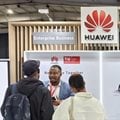Marketing & Media trends
Industry trends
BizTrends Sponsors
Trending




 Sabre EMEA 2024 Awards: Razor PR, Retroviral top SA agenciesDanette Breitenbach
Sabre EMEA 2024 Awards: Razor PR, Retroviral top SA agenciesDanette Breitenbach
Jobs
- Marketing Manager Johannesburg
#BizTrends2017: The gamechangers for digital marketers

Likewise, South Africa’s local digital advertising industry success mirrored that of North America and Europe. In Nov 2016, IAB South Africa reflected strong revenue figures invoiced for 2015, moving beyond R3.4bn in Ad spend.
In order for our Industry to continue with this momentum, it’s imperative for the local digital advertising ecosystem to be unified so that knowledge sharing remains at the core of this cutting-edge industry, allowing all stakeholders to benefit from this unified approach. Having a view of both ad technologies and the hardware devices that enable online advertising, these are the top most six digital trends that I think will upwardly shape our landscape in 2017:
1. Data visualisation tools. If you can’t measure it, you can’t manage it
Data is more than a currency for brands who want to gain a competitive edge. Digital players have been building infrastructure to give campaign managers the right tools to harness insightful data by executing data driven campaigns. By investing in data visualisation tools, brands and marketers are equipped to understand buyers’ behaviours and visualise clearer paths of any consumer’s journey, allowing for better storytelling with decision making numbers in real time.
2. Artificial, virtual or augmented reality in a digital world
In 2016, Niantic introduced to the real world a global phenomenon in the form of an augmented reality game, Pokémon Go. This showed the digital world that we’re ready to interact both as people and as devices in imaginative ways, providing marketers an extra channel to add to media plans. Google, Sony, Facebook, Samsung, HTC, Microsoft and many more have already invested in the hardware therefore smart advertisers will need to adopt this early. Think 360 degree videos, branded webinars, interactive workshops.
3. Video, video, video everywhere. Live video streaming
Thanks to Facebook Live, Twitter’s Periscope and live video for Instagram stories in 2016, live video marketing will take off nicely in 2017. Live video streaming allows for that “in the moment” value proposition as far as user engagements. Brands have a platform to inspire audiences with captivating experiences and are able to measure user’s feelings and emotions almost instantaneously.
4. Sponsored and promoted native advertising
Online Publishers have caught on that blending content with ads that form and function as part of a site’s editorial feed is one of the ways of raking in much needed revenue. Advertisers who produce video or articles will find it easier in 2017 to promote content into publisher feeds, subtly integrating ads to real content, masking advertorial content into actual news feeds. Google, Facebook and Twitter have all been successful at promoting native content in the feed streams and this is poised to increase this year. Most big publishers have also decided to capitalise on this, blending video, sponsored articles and quality ad content on their premium sites without annoying their audiences, avoiding usage of ad blockers.
5. Maturity of the mobile device
In the US alone, mobile influenced a $500bn spend in retail sales for 2016 alone. The mobile device really came of age last year, excelling in areas such as mobile commerce and geo location services. Longer battery life, bigger screens and faster processing performances have enormously helped evolve our beloved first screen of choice. In 2017, Mobile will remain a key tech enabler. Though AI, VR and AR will take centre stage via mobile, digital assistants like Siri will also boost voice searches increasing revenue streams for search advertising via audio. Our mobile devices will help us more and more interact with the world around us as the internet of things will really come alive. Connected ‘mobile’ devices will also go way beyond phones and watches, increasing the market share of wearables. Mobile creatives will include sizes to cover wearables.
6. Chatbots
As machine learning capabilities mature, large online publishers have turned to chatbots to perform customer service delivery tasks which are helping streamline tedious and mundane tasks for large websites. Chatbots were already more common in the later part of 2016, especially on social media. In 2017, chatbots will extend to cover mobile devices web platforms; distribute even more narrative information by interacting with text, audio and video; executing life like assisted commands and responses. Google’s Home and Allo, Apple’s TV and Siri and also Amazon’s Echo and Alexa, will be a big deal in the late stages of 2017. Advertisers will soon be required to find a way to integrate brand personalities into chatbots, fostering a culture of a brand identity within artificial intelligence, creating chat bots that will be brand ambassadors across all connected platforms.




